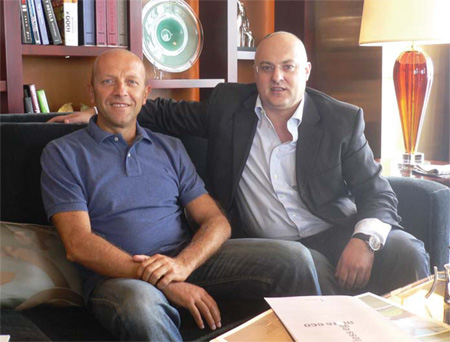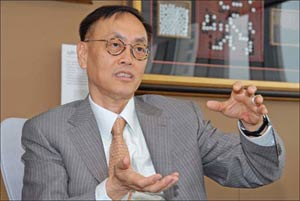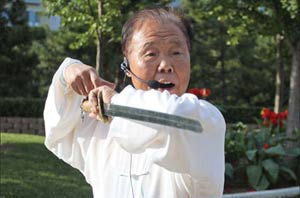Italian job, done in China
Updated: 2011-10-14 08:46
By Meng Jing (China Daily)
|
|||||||||
|
Massimo Roj (left), founder of Progetto CMR, and Massimo Bagnasco, managing director, say a lot of foreign architecture firms are moving to China for better opportunities. Meng Jing / China Daily |
Major architecture firm with projects on hold is not standing idly by
Massimo Roj has great designs and towering ambitions - all he needs now are some buildings to show prospective clients and they may be convinced he is their man.
Roj is founder and president of the Italian architectural practice Progetto CMR, designer of a stadium that opened in Tianjin, North China, last month.
Contrast that with Progetto CMR's home country, four stadiums it has designed remain firmly stuck in design portfolios because of the country's sluggish economy.
China, with its booming economy, rapid urbanization and demand for new buildings, has become the place to be for architectural practices worldwide.
In addition to the finished project in Tianjin, Progetto CMR has two more stadiums in China in the pipeline.
"We have built 1.5 million square meters in China," Roj says. "You can actually touch them. To finish the same work in Italy, you need maybe 10 generations of architects."
Progetto CMR, whose headquarters is in Milan, entered the Chinese market in 2003. It has enjoyed average annual revenue growth of 20 percent over the past three years.
Last year takings in China were 20 million yuan ($3.15 million, 2.34 million euros), putting it at 92nd on a list of the world's top architectural firms published by the British magazine Building Design. Progetto CMR had been 121st on the list the year before. It is the only Italian practice in the top 100.
"China is one of our fastest growing markets, which is the largest market for our company outside Europe," says Roj, who founded Progetto CMR in 1994.
Europe is still its largest market, but the financial crisis in 2008 made growth there impossible, he says.
He arrived in Beijing four days before the opening ceremony of Tianjin Tuanbo Soccer Stadium, the first finished stadium from his company anywhere.
The passion and excitement he showed in talking of his company's performance in China betrayed little of the tiredness he must have been feeling only a few hours after arriving from Milan.
"In Italy we don't have a lot of opportunities to design new buildings. (Recently) Italy opened the first stadium in 30 years."
The new Tianjin stadium was built at a cost of 500 million yuan and has a capacity of 30,000 spectators. It is the base for Tianjin Songjiang Football Club and will hold the East Asian Games in 2013 and the National Games of the People's Republic of China in 2017.
Completed projects in China will give the company the chance to show its skills for designing large buildings in Europe, he says.
The company was one of the first European architectural firms to set up shop in China. Roj admits that in the early days he was highly skeptical about setting up shop in China.
"In the first three years we invested more than 2 million euros ($1.5 million) in China a big amount for us. But I saw China's potential."
He first came to China in 2002, invited by the government of Tianjin to take part in a design competition. Rapid growth was what impressed him most in China. "Even missing a few months here in China, you will find huge differences around the cities."
China is now one of the biggest markets for architecture firms. According to a survey by Building Design this year, 53 percent out of 200 architectural practices in the world believe China is the country with the greatest growth potential.
"China is definitely an emerging market," says Massimo Bagnasco, partner and managing director of Progetto CMR, who is also the chairman of the construction working group of the European Chamber of Commerce in China.
"Right now, a lot of Western companies are moving to China because there are not a lot of opportunities (at home).
"Newcomers need time to set up and build up relationship(s), so for us it is very good, because we've already done that. For new companies it is not easy."
He says Chinese regulations bar foreign companies from taking on full design responsibilities for projects. The key is for companies to have strong ties with their clients, meaning they can work side-by-side with local companies.
Sitting on the 64th floor of Shangri-La's China World Summit Wing located in the central business district of Beijing, Roj says his dream is to build a similar skyscraper in China.
The 330-meter, 81-floor building is one of the tallest in Beijing. Another new skycrapper, Zhongguo Zun, is about to rise near it and will be 170 meters taller.
There are plenty of opportunities to build skyscrapers in China, but Progetto CMR is handicapped because it has little experience in designing such tall buildings.
"Sometimes, when we face local clients (and) show our portfolio, they say, 'Oh, it is nice design. What did you build?' Then we show them the Milan one and one in China, they will say 'Look, American companies have a lot.' If we never start we will never have the opportunities."










